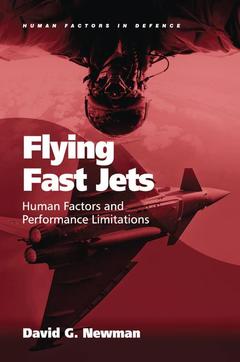Description
Flying Fast Jets
Human Factors and Performance Limitations
Human Factors in Defence Series
Author: Newman David G.
Language: English
Subjects for Flying Fast Jets:
Keywords
Fast Jet Pilot; pilot; Fast Jet; Fast Jet Aircrew; ACM; Air Combat Manoeuvring; Fast Jet Operations; Fast Jet Cockpit; Fast Jet Aircraft; air; Ejection Seat; combat; Gz Load; manoeuvring; Fast Jet Environment; Gz Exposure; Decompression Illness; Cockpit Pressurisation; Modern Fast Jet; Gz Tolerance; Gz Levels; HMD; LCG; Life Support Equipment; Immersion Suit; Somatogravic Illusion; Bleed Air System; Ejection Sequence; Main Parachute
Support: Print on demand
Description
/li>Contents
/li>Biography
/li>




